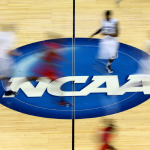
How the relationship between college student-athletes and brands is changing
The new laws anticipate the Gen Z gold rush

June 30th, 2021
Only the official status is missing, which will arrive by the hour, but it is now done: college athletes can earn from endorsement contracts that they can sign. A historic turning point that balances an unequal system, linked to old regulations that seemed to belong to a world too distant from that of 2021. The news is confirmed by the NCAA (National Collegiate Athletic Association) panel called Division I Council, a group formed by commissioner of the various conferences and athletic directors. Student-athletes, thanks to the laws that will come into force from July 1st in eight states (Alabama, Florida, Georgia, Kentucky, Mississippi, New Mexico, Ohio and Texas) plus twelve more where, however, it will have to wait a few more weeks, will be able to sign sponsorship contracts and earn thanks to their name and their image.
The world of fashion is ready to welcome in the market a no longer negligible slice of the Gen Z market, untouchable until the new agreements come into force. It will be possible to both collaborate with brands and use your name to launch personal brands, just like Jordan Bohannon did, who tomorrow will become the first collegiate basketball player to launch his own clothing line - the J3O.
The NCAA DI Council, as expected, agreed today to support the NCAA’s interim NIL solution, sources tell @SInow.
— Ross Dellenger (@RossDellenger) June 28, 2021
Council members reviewed today the attached, adjusted version of the draft we reported about on Saturday. DI Board of Directors is expected to adopt it on Wednesday. pic.twitter.com/WMKaUQ3Id6
It will be the first but not the last (the list is very long) in a completely new market and which will finally be accessible even to non-professionals. According to 2018 data from the National Bureau of Economic Research, the average revenue of college sports departments was $ 125 million, up 60% over the previous decade. Times that seem to be behind us, years in which the strict rules of the NCAA did not allow even the simple contact between brand and student-athlete. On the rigidity of the laws, the Jersey-gate of LeBron James in February 2003 makes history, when the "Chosen One" was given a shirt by the owner of a well-known shop in Cleveland and this "donation" was seen as an improper exchange - James was then disqualified for two games.
The new policy - which could be finally approved in the next few hours by the NCAA Division I Board of Directors - will officially go into effect tomorrow and would only apply to Division I universities, which has more than 170,000 student-athletes and features championships. richest and most famous in college sports, including the Power 5, the five major conferences: Atlantic Coast, Big Ten, Big 12, Pac-12 e la Southeastern Conference - divisions II and III will still take some time . In a revolution of important dimensions, some specifications are obviously foreseen to avoid the wave of speculation that could exist: if on the one hand the economic recognition that can only be translated into scholarships and subsidies for living expenses is eliminated, the prohibition remains valid. to provide salaries to student-players and they will not be allowed to accept money in exchange for enrolling in a particular school.
At the moment, there are still many disputes: it has not yet been established whether the logos of the home university can be used in advertising or whether this new regulation - which at the moment is not applied to all States but only to about twenty - it will influence the choice of young people to attend a university that guarantees this right in spite of those who do not adhere to this program. For this reason, the total revolution will come only when Congress takes a stand on the issue.
It is widely predictable that the new generation will derive the maximum benefits from these new scenarios, especially because it will allow them to earn also and above all through social networks: Paige Bueckers, star of the University of Connecticut women's basketball team, has 829,000 followers on Instagram and so too many of her colleagues. For the fashion industry and influencer marketing strategies, being able to invest in personalities and faces so rooted in the community but at the same time followed in the media can guarantee a huge leap in quality. Brands can therefore begin to build an image and a collaboration even before the leap between the pros and the academic path is finished. We can speak of a gold rush ahead of the roadmap in force until a year ago.
From an archaic, asymmetrical and antiquated system to a completely new one that will increase the possibility of profit for both student-athletes and the fashion system.








































.png)


.jpg)






